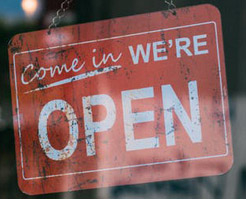All about champagne
- What is champagne?
- The Champagne region
- How is champagne produced?
- Uncorking and serving Champagne
- Champagne storage
- The most popular champagne cocktails
Information & advice
Our customer service team is available for you on Monday through Friday from 8:30 am to 5:00 pm and on Saturday from 8:30 am to 1:00 pm.
020-408 48 51
Storing champagne

This is how you maintain the quality of your champagne!
A great bottle of champagne is a celebration in itself. Whether you’re saving a bottle for a special occasion or trying to keep an opened bottle fresh for as long as possible, proper storage makes all the difference.
Champagne requires care and the right conditions to preserve its unique taste and sparkle. In this blog, we answer the question: How do you store champagne?
Why is the way you store champagne important?
Champagne is a delicate drink that is sensitive to external influences. Direct light can affect the taste, while fluctuations in temperature change the pressure in the bottle and can damage the cork. Even minimal movement can make the bubbles disappear faster. By storing the bottle correctly, you can keep the champagne at its best and enjoy it optimally at the moment of opening.
How Long Can You Store Champagne?
The shelf life of champagne depends on several factors, including the type of champagne and whether the bottle is opened or closed.
An opened bottle will stay fresh in the refrigerator for approximately 3 to 5 days.
For an unopened bottle, storage time varies by type:
- Non-vintage champagne: Best enjoyed within 9 months.
- Vintage champagne: Ideally consumed within a year.
- Prestige champagne: Can often be stored for longer due to extended maturation. Some prestige champagnes remain of high quality for 10 to 15 years, as they are made exclusively from top-quality grapes.
Want to learn more about champagne’s shelf life and the factors that influence it? Read our blog about the shelf life of champagne for more information!
Ideal Storage Conditions for Closed Champagne
Follow these best practices to store your champagne properly:
- Store champagne in a dark, draft-free place: Champagne is sensitive to light, which can cause oxidation and affect its taste. Keep the bottle in a dark place, such as a basement or a closed cupboard, and avoid drafts to prevent sudden temperature changes.
- Maintain a temperature of 7-12°C: Keep champagne at a stable temperature between 7 and 12°C. Temperature fluctuations speed up maturation and can impact the bottle’s pressure, affecting quality. A wine fridge is ideal if you don’t have a cellar.
- Store the bottle horizontally: Keeping champagne stored on its side prevents the cork from drying out, which helps maintain the seal and preserve the bubbles and flavor.
- Minimize movement: Vibrations and shocks can disrupt the bubbles and reduce the champagne’s refinement. Store the bottle in a stable location, away from appliances that cause vibrations.
By following these tips, you can keep your champagne in perfect condition until the moment you uncork it!
How to Store an Open Bottle of Champagne
An opened bottle of champagne can stay fresh for a few days if stored properly. Follow these tips to preserve its bubbles and flavor for as long as possible:
- Use a vacuum champagne stopper: Seal the bottle tightly with a vacuum champagne stopper to prevent the bubbles from escaping and to protect the champagne from oxidation. This handy accessory is a must-have for every champagne lover.
- Store the bottle upright in the refrigerator: Keeping the bottle upright minimizes the champagne’s exposure to air, helping to maintain its bubbles and fresh taste for longer.
- Drink within 3-5 days: Even with proper sealing and refrigeration, champagne’s quality declines over time. For the best flavor and sparkle, enjoy it within 3-5 days.
By following these simple storage tips, you can enjoy your opened bottle of champagne for longer—even after the first glass. Want to learn the best way to open a bottle of champagne? Read our champagne uncorking blog.
How can you tell champagne has gone bad?
There are several signs to look for when determining whether your champagne is still good. You can assess its quality by examining the bubbles, taste, and smell. If the bubbles are weak or disappear quickly, the champagne has likely lost its sparkle. The aroma is another important clue: fresh champagne has a bright, floral scent, while a musty or stale odor suggests it has passed its prime. Taste is also a strong indicator—a good champagne should be lively and refreshing, whereas a bad one will taste flat or sour.
Is your champagne no longer drinkable? Don’t throw it away! Instead, use it in the kitchen—for example, as a base for a delicious sauce. That way, you can still enjoy it!
Make the most of your champagne!
Proper storage is essential for maintaining the quality and longevity of your champagne. To keep it tasting its best, store it under ideal conditions—away from light, temperature fluctuations, and movement. For opened bottles, use a vacuum champagne stopper to preserve the bubbles. By following these tips, your champagne will stay fresh and sparkling until the moment you enjoy it!




